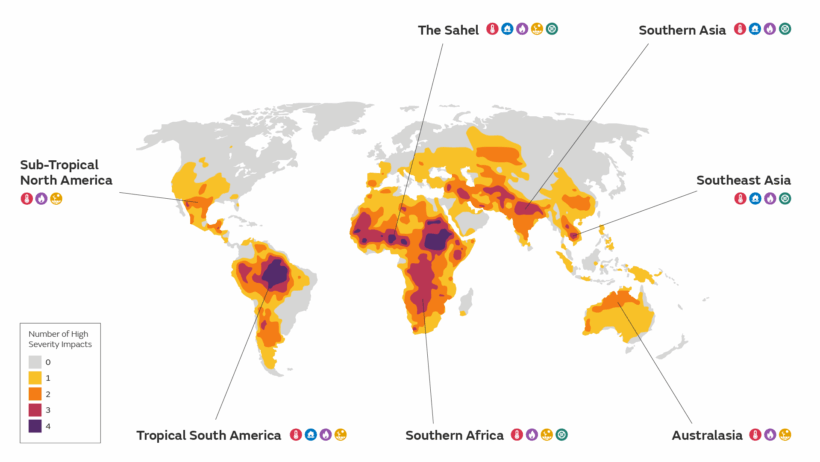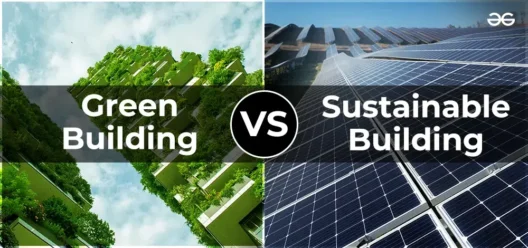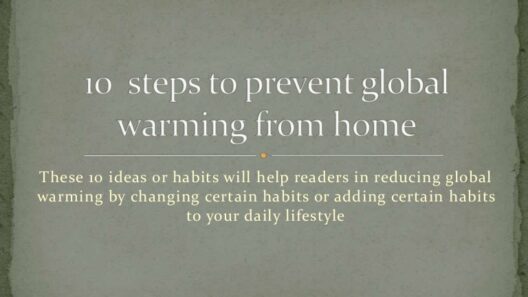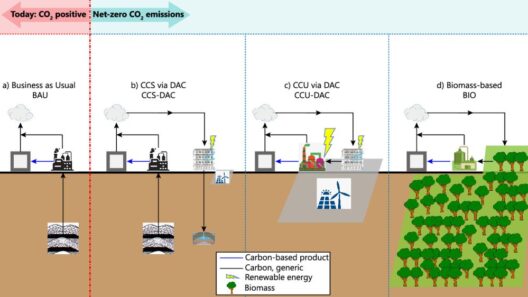Climate change often conjures images of sweltering temperatures and melting glaciers. However, the ramifications of this phenomenon extend far beyond mere heat. Have you ever wondered how climate change affects biodiversity or food security? The intricate web of life on Earth is threatened by the myriad consequences of global warming, giving rise to an urgent need for awareness and action.
To understand the broader implications of climate change, it is vital to delve into its multifaceted impacts. These repercussions not only threaten ecosystems but also jeopardize human health, economic stability, and cultural heritage. As we explore the depths of these effects, imagine a world transformed—not just by rising temperatures but also by shifts in weather patterns, sea-level rise, and a host of complex interactions that create reverberations across the globe.
The first significant impact of climate change is the alteration of weather patterns, which has cascading effects on agriculture and food supply. Higher temperatures disrupt standard growing seasons, leading to crop failures and diminished yields. For instance, staple crops like wheat and corn are particularly vulnerable to heat stress. This unpredictability in agricultural productivity can result in food scarcity, exorbitant prices, and a heightened risk of famine in vulnerable regions. Additionally, altered precipitation patterns can cause soil degradation and desertification, compounding the challenges faced by farmers worldwide.
Moreover, as droughts become more prevalent and severe, farmers may be forced to abandon traditional agricultural practices. The challenge lies in adapting to these newfound realities while maintaining sustainable practices. This scenario poses a striking question: if global temperatures continue to rise, will we be able to feed a growing population? The intersection of climate change and food security prompts critical discourse on innovation in agricultural technology to foster resilience.
Furthermore, the impacts of climate change on ecosystems are profound and alarming. Rising temperatures lead to habitat loss, threatening countless species with extinction. Coral reefs, often termed the ‘rainforests of the sea,’ are particularly susceptible to the stresses of warmer waters. Coral bleaching events, exacerbated by elevated temperatures, result in widespread destruction of these vital marine ecosystems. The loss of biodiversity undermines not only ecological stability but also the natural services that ecosystems provide, such as pollination, water purification, and carbon sequestration.
The decline of biodiversity also has socio-economic ramifications. Many communities, particularly indigenous populations, rely on local ecosystems for their livelihoods, food, and cultural identity. The question arises: can we afford to lose these intricate networks that sustain both ecological and human health? The implications of biodiversity loss extend to the very fabric of our societies, challenging sustainable development and environmental justice.
Another pressing concern relates to public health. Climate change is a catalyst for a myriad of health issues, from respiratory problems exacerbated by poor air quality to the resurgence of vector-borne diseases such as malaria and dengue fever, as mosquitoes thrive under warmer conditions. Heatwaves and extreme weather events can also lead to increased morbidity and mortality. This leads to an essential inquiry: how can healthcare systems adapt to the growing health challenges posed by climate change? The intersection of environmental health and public policy becomes critical for safeguarding communities.
Additionally, the impacts of climate change are felt acutely in urban environments. As cities expand and climate threats mount, urban planning must evolve. Flooding from sea-level rise poses an existential risk to coastal cities, while heat islands intensify urban temperatures. The challenge for city planners is to implement resilient infrastructure that can withstand these changes. Do we have the capacity to reimagine urban spaces in harmony with nature, creating sustainable and livable cities for future generations?
Moreover, climate change is inexorably linked to economic instability. As natural disasters become more frequent and severe, the economic repercussions are staggering—from increased insurance costs to infrastructure damage. Vulnerable communities often bear the brunt of these economic impacts, resulting in a disparity in resource allocation and recovery efforts. It begs the question: what steps can we take to bridge the economic divide exacerbated by climate change?
The cultural impacts of climate change are equally significant. The erosion of cultural heritage sites due to rising sea levels and extreme weather events threatens communities’ historical identity. The loss of these irreplaceable landmarks raises existential questions about memory, legacy, and the role of cultural heritage in shaping our collective future. How do we protect and preserve the rich tapestries of history threatened by climate change?
In conclusion, climate change is an insidious force that transcends the confines of temperature increase. Its far-reaching impacts unravel the interconnectedness of our ecosystems, economies, and societies. Addressing these challenges requires a holistic approach, integrating scientific innovation, sustainable practices, and community engagement. As we navigate this tumultuous terrain, the challenge lies not only in mitigating the effects of climate change but also in fostering resilience and adaptability in a rapidly changing world. The question remains: are we ready to rise to the challenge, transforming our planet into a sustainable haven for all forms of life?








